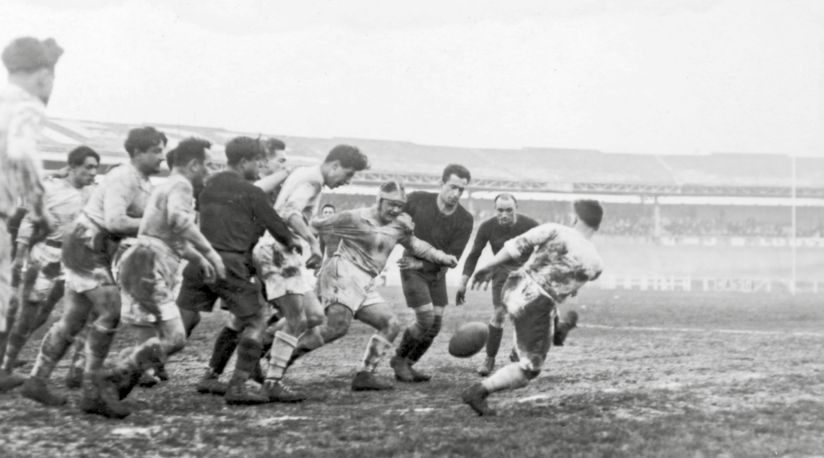Once upon a time... in Rugby
At the launch of the Rugby World Cup on September 8 in France, dive into the small and big stories of this "gentlemen's" sport. Are you ready? So kick off! Today, discover the birthplace of the game.

The origin of rugby football may be a myth, but it's a story worth telling and is the bedrock of our collective psyche. The story goes as follows: rugby was born in England in 1823 at Rugby School in the West Midlands, when one of its students – William Webb Ellis – picked up the ball during a football match and ran towards the other team's goal. This act of foul play would eventually lead to the creation of the world's third most-watched sports event after the Olympics and football (soccer, for our American friends).
The reality is no doubt less outlandish. Fairly similar sports were already played in ancient Rome and ancient Egypt. In France, the sport of soule or choule played in Normandy and Picardy in the Middle Ages is also reminiscent of rugby. Modern rugby union is therefore probably just a variation of these older sports, but a variation whose rules were indeed established at Rugby School, whence its name. Indeed, in the 1820s and 1830s, Rugby School's students began to define this sport's basic rules, in particular regarding forward passes and being offside. The ball, flattened by being crushed under players' arms, became officially oval and made local cobbler William Gilbert rich – indeed his brand still supplies the official balls for the World Cup and most other official competitions, such as France's Top 14.
The first written laws of the game were produced in 1846, marking rugby football's definitive schism with association football. Around the same time, former Rugby School students who had moved abroad began to introduce this new sport in other countries, notably in France around 1870, and rugby thus gradually became established. The first competitions followed swiftly, with the Home Nations Championship first being played in 1883, before becoming the Five Nations Championship when France was added in 1910 and then the Six Nations when Italy joined in 2000.
The 1980s: a pivotal change
Modern rugby really began in the 1980s. Although many other sports had become professional, those in charge of rugby union steadfastly refused to bring money into the game. However, they weren't blind, and were fully aware that envelopes containing cash circulated in most stadia, along with fringe benefits or fictitious jobs to keep players loyal to their club. But they were determined to keep the sport amateur, with the international federation turning down a suggestion from the President of the French Rugby Federation, Alfred Eluère, back in 1947 that a worldwide competition should be organised.
Led by France, Australia and New Zealand, the idea was debated numerous times until finally, at the Paris meeting of 1985, England and Wales backed down and voted in favour of making the sport professional. The first Rugby World Cup was held in Australia and New Zealand in 1987 – without South Africa who were excluded because of apartheid. The French team with Serge Blanco lost in final against New Zealand. Rugby had now entered a new phase, notably commercially, and nothing could stop its move towards professionalism, made official in 1995. 2019 will be the ninth World Cup, the first one held in Asia and the first one in a country in which rugby is a relatively new sport. This is ultimate proof that this sport has never stopped spreading, also illustrated by its rapid rise in popularity in India.
Source: Archives Societe Generale